Iceland sits in the North Atlantic Ocean.
It is a Nordic Island country.
It is a very sparsely populated country.
The island nation is defined by its mesmerizing and dramatic landscapes, which include volcanoes, hot springs, geysers, and lava fields.
The total land area of the country is 103,000 square meters.
That’s relatively small.
When considering the purpose of a castle, which is to act as a fortress when an area, city, or country is constantly under attack, one has to wonder, does Iceland have any castles?
The short answer to this question is no.
There are currently no current stone castles in Iceland, but there were castles made from other materials in the past.
The reason is that the country is too small and, for the most part, has been too poor to build a structure of this size.
In addition, attacking the island nation is a very difficult task.
Therefore, many settlements did not see a purpose in building a castle.
Contents
Two Most Beautiful Castles in Iceland
According to architect Hrólfur Karl Cela, there are no ancient buildings in Iceland.
There is a very specific reason for this.
To begin with, the country was founded in 874.
It doesn’t have a rich history in terms of architecture, like some older countries such as Jordan or Italy, for example.
This is important because what this essentially means, among other things, is that there are no ancient buildings and therefore no ancient castles in Iceland.
This is not to say that buildings weren’t erected throughout the history of the island nation.
They were.
They simply did not stand the test of time.
The structures decompose into themselves over time, leaving nothing more than a stone barrier.
1. Borgarvirki Fortress
Borgarvirki Fortress is located in the northwest of the country.
This seems to be the only type of structure that resembles a castle or fortress.
An important point to note is that the country was populated by Vikings from Norway and Denmark.
Even today, more than sixty percent of the total population of the country is of Nordic descent.
Vikings were known to invade European countries and were violent in nature.
One might expect that the country would have more than just one castle or fortress.
Borgarvirki Fortress received conservation status in 1817.
It is one of the first historical sites in the country to achieve this.
Borgarvirki Fortress is a prominent landmark situated on-route through the Huna District.
So what exactly is Borgarvirki Fortress and what purpose did it serve?
Firstly, it is a citadel.
It is situated on the Vatnsnes peninsula in northwest Iceland.
It is both a volcanic plug and a columnar basalt fortress.
In terms of size, the total structure is around 10 to 15 meters and it sits approximately 177 meters above sea level.
Legend has it that the structure was utilized as a Viking fortress but there seems to be no actual proof of this.
Keep in mind, as previously stated, most of the structures have decomposed into themselves.
The very fact that this still remains is what makes it so unique.
And, coupled with its legend, it has made it onto this list, as the only structure reminiscent of a fortress.
The fortress was again renovated in 1949 by the locals, who put up a sign indicating the history of the site for those that came to visit it.
In addition, the locals put a gravel lintel at the entrance of the site along with the construction of a murno glast wall around it.
The area where Borgarvirki Fortress is found is very rocky and somewhat challenging to climb, but there are steps that lead to the top.
When climbing to the top, be mindful as many rocks have fallen and there may be a risk of loose stones or rocks.
But, for those that do climb to the top, there is an absolutely mesmerizing view of the landscape and water bodies below.
This alone makes the trip and climb worth the effort.
In the middle of a fortress, you’ll find a five to six-meter hollow dent.
It’s clear that there were man-made walls built here from stone that feature an opening to the east.
There are parts of the wall and structure that underwent reconstruction between the period of 1949 to 1950.
For those interested in traveling to the site, there is an information board posted.
It highlights the historical points, legends, and many facts about the structure.
So what exactly is the legend of this fortress?
According to Þjóðsögur Jóns Árnasonar – the Collection of Folklore of Jón Árnason it is believed to have been constructed to protect Finnbogi from attacks by the enemies of Vatnsdæla in the 11th century.
Though the website explains that there is no actual proof of this and this is only legend, it is still believed by many to be true.
It is also believed that the legend of the fortress may be an older version of the Heiðarvíga Saga.
However, this has not been confirmed.
To be clear, there are no actual facts about Borgarvirki and who really used it or if it was truly used as a fortress, to begin with.
Much of what remains would suggest that the folklore surrounding the legend is true and that it was in fact used as a fortress.
The time period suggested for its use was during the Icelandic civil war.
Furthermore, it is suggested in the Sagas that there were two separate attacks on Borgarvirki by two great armies but both of these attacks were unsuccessful.
The fortress offers mesmerizing views of the surrounding landscape and is 200 fathoms in the perimeter.
There are steps that lead up to the fortress at the back.
Inside the fortress, you will find the ruins of two small huts as well as a grassy dell and a wellspring.
The best time to visit the site is during the summer.
You could take a relaxed, non-guided tour.
2. Dimmuborgir
The second structure to make it onto this list is Dimmuborgir.
The reason that Dimmuborgir made it onto the list is due to the folklore surrounding the structure.
Firstly, let’s take a look at the geology of the structure before we dive into the folklore surrounding it.
Dimmuborgir came into existence approximately 2,300 years ago when a volcano erupted in the highly volcanic Lake Mývatn area.
During the eruption, lava flowed over a nearby lake.
The hot lava caused the water to boil and large amounts of steam to be released into the air.
The water helped to cool the lava as well. However, the pillars of steam shattered the formation of the cooled lava.
This in turn caused various caves and caverns to form.
This sequence of events created what is known today as the Black Castles.
The formation of the structure and its design have been compared to that of a medieval castle.
So now that we understand how it was formed, let’s take a quick look at the folklore that surrounds the structure and why it made it onto this list.
According to Icelandic folklore, trolls are real and lava caves are the homes of these brutal and vile creatures.
One of the most famous folklore of trolls is that of Grýla and her husband Leppalúði.
Grýla was believed to be a half-troll and half-ogre creature.
She was renowned for eating children along with being the owner of a giant cat.
During the Christmas period, it is believed that her insatiable appetite for children who did not complete their sewing and weaving chores before the season started, could not be satisfied.
To this day, it encourages young children to do their chores.
The folklore further states that the couple had thirteen sons that lived in Dimmuborgir and terrorized the locals on the thirteen days before Christmas, with each son having his own unique strategy or ability for achieving this goal.
The sons were named after their specific strategy.
These sons would come to be known as the ‘Icelandic Santa Clauses’ or Yule Lads.
For example, there was Stubby, a Sausage stealer, a candle beggar, etc.
On the first day of December, children would put out their shoes on the window sill.
If the children behaved during the year, they would receive a present in their shoes.
However, if they were bad, they would receive a potato.
You may notice that Dimmuborgir seems somewhat familiar when looking at pictures of it.
And you’d be right.
The area features in one of HBO’s famous television series, Game of Thrones.
Iceland Safety Overview
READ THE FULL REPORT: Iceland Safety Review
Safety Index:
- OVERALL RISK: LOW
- TRANSPORT & TAXIS RISK: LOW
- PICKPOCKETS RISK: LOW
- NATURAL DISASTERS RISK: MEDIUM
- MUGGING RISK: LOW
- TERRORISM RISK: LOW
- SCAMS RISK: LOW
- WOMEN TRAVELERS RISK: LOW
Frequently Asked Questions
Does Iceland have a King and Queen?
No.
However, in history, Iceland fell under the Monarch of Denmark due to the Act of Union.
This lasted from 1 December 1918 until 17 June 1944.
After this period, Iceland was declared the Republic of Iceland.
Were there ever any castles in Iceland?
Yes.
There were castles in Iceland but they were built from wood.
Over the centuries, these castles were broken down and the wood was utilized for other purposes.
Due to the fact that these structures were broken down, there is no real history or account of them.
Who was the last queen of Iceland?
Alexandrine was born on Christmas Eve in 1879.
Her father was Frederick III of Mecklenburg-Schwerin and her mother was Grand Duchess Anastasia Mikhailovna of Russia.
Iceland was bound to Denmark by an agreement known as the Act of Union.
Who Rules Iceland now?
The country of Iceland is ruled by President Guðni Thorlacius Jóhannesson who was elected to power in June 2020.
In Iceland, the prime minister is the head of government.
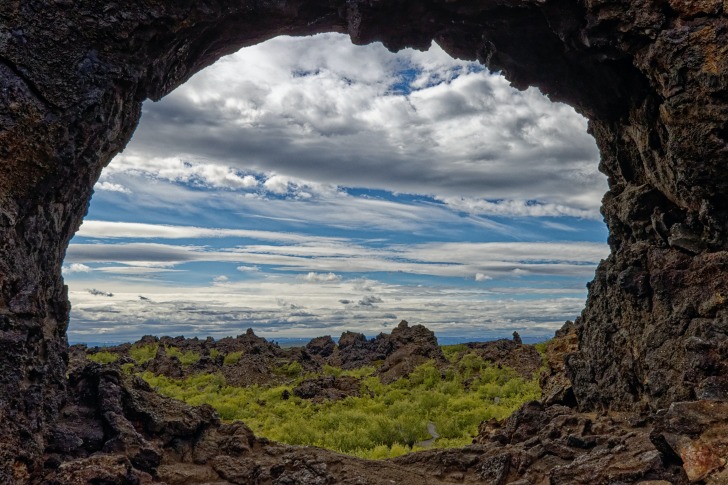
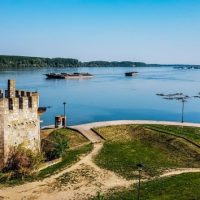
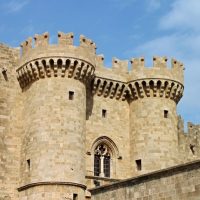
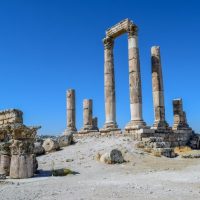
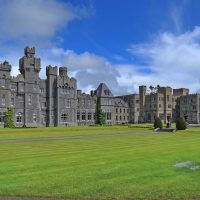
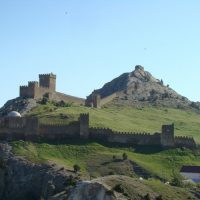
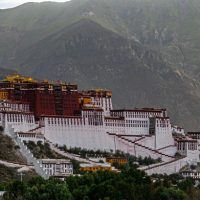





In the series, Dimmuborgir serves as the location for Mance Rayder’s wildling army camp and the Grateful Dead’s hideout.
In terms of the structure itself, it is a fairly easy walk to the top.
The views from the top are absolutely breathtaking.
The area is also home to a variety of birds and other wildlife.
If you’re lucky you may even spot a few elves, according to local legends.
In conclusion, while Iceland may not have any traditional stone castles, it is rich in folklore and legends surrounding structures that resemble castles, such as Borgarvirki Fortress and Dimmuborgir.
It is believed that Dimmuborgir may have been an inspiration to J.R.R Tolkien when he wrote his famous book – Lord of The Rings.
So what exactly can you do at Dimmuborgir?
There are a few things.
Firstly, there is a camping site nearby where visitors could set up their tents and spend some time exploring this beautiful structure.
Secondly, there are hiking trails available with varying levels of difficulty so everyone can enjoy them regardless of fitness level or age.
Thirdly, during winter months (from October until April), guided tours through Dimmuborgir take place every day from 10 am to 4 pm.